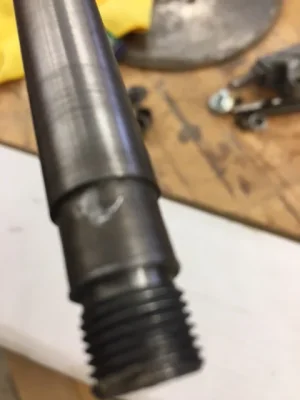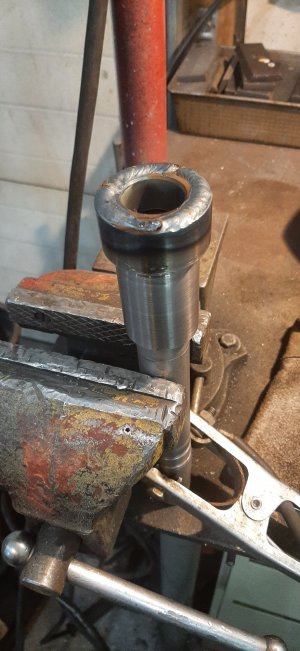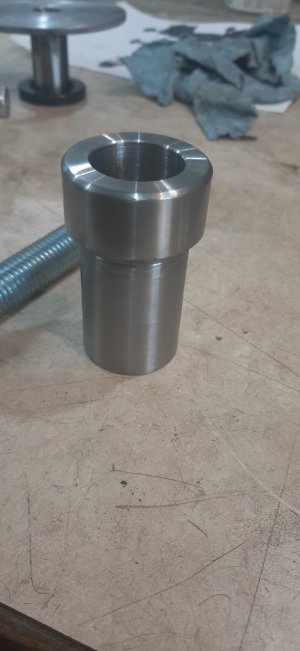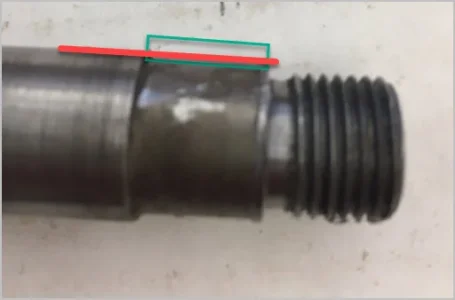calgaryguy
Chris
I've got a shaft out of a 6x48 sander belt idler thats abnormally worn on one bearing location. I just picked this sander up at an auction and was going thru it and noticed the idler pulley bearings were noisy.
Shaft is ~12" long, and slightly larger than 1/2" dia.



There are identical bearings at each end of this shaft with an id that is a slightly loose press fit. I initially thought the shoulder shown in the last two pics was machined and that the wrong bearing had been installed at some point. Nope, the shaft spun for so long in the bearing that it wore a new shoulder.
The two options I can think of to repair this is
1) machine the 'shoulder area' shown in the pics down to the next smaller ID bearing. I've already procured a bearing whose other dimensions are identical to the original except the ID is slightly smaller than the worn area.
2) build up the shoulder area via tig/mig and then machine down to match the OD of the shaft.
Any other options Im not thinking of?
Shaft is ~12" long, and slightly larger than 1/2" dia.
There are identical bearings at each end of this shaft with an id that is a slightly loose press fit. I initially thought the shoulder shown in the last two pics was machined and that the wrong bearing had been installed at some point. Nope, the shaft spun for so long in the bearing that it wore a new shoulder.
The two options I can think of to repair this is
1) machine the 'shoulder area' shown in the pics down to the next smaller ID bearing. I've already procured a bearing whose other dimensions are identical to the original except the ID is slightly smaller than the worn area.
2) build up the shoulder area via tig/mig and then machine down to match the OD of the shaft.
Any other options Im not thinking of?




